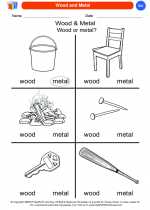Ferns: A Study Guide
What are Ferns?
Ferns are a group of non-flowering vascular plants that reproduce via spores. They are known for their large, divided leaves called fronds, and are found in various habitats including forests, wetlands, and even deserts.
Life Cycle of Ferns
The life cycle of a fern starts with a spore, which develops into a tiny heart-shaped structure called a gametophyte. The gametophyte produces eggs and sperm, which fertilize to form a new plant called a sporophyte. The sporophyte grows into the familiar fern plant with fronds.
Key Characteristics of Ferns
- Vascular plants with well-developed root, stem, and leaf systems
- Reproduce via spores instead of seeds
- Have fronds, which are large, divided leaves
- Require moist environments for reproduction and growth
Uses of Ferns
Ferns have both ornamental and practical uses. Some species are cultivated as ornamental plants in gardens and landscapes. Additionally, certain types of ferns are used for medicinal purposes and as food in some cultures.
Fun Facts about Ferns
- Ferns are among the oldest plants on Earth, with fossil records dating back to over 300 million years ago
- They played a significant role in the coal-forming process during the Carboniferous period
- Ferns have a unique way of reproducing through spores and have a distinct life cycle compared to flowering plants
Study Tips for Ferns
When studying ferns, be sure to focus on their life cycle, key characteristics, and ecological significance. Understanding the different stages of their life cycle and the role of spores in reproduction is crucial. Additionally, familiarize yourself with the various types of ferns and their uses in different cultures and ecosystems.
[Ferns] Related Worksheets and Study Guides:
.◂Science Worksheets and Study Guides Kindergarten. Matter

 Coloring Worksheet
Coloring Worksheet
 Coloring Worksheet
Coloring Worksheet
 Coloring Worksheet
Coloring Worksheet
 Coloring Worksheet
Coloring Worksheet
 Coloring Worksheet
Coloring Worksheet
 Coloring Worksheet
Coloring Worksheet
 Coloring Worksheet
Coloring Worksheet
 Coloring Worksheet
Coloring Worksheet
 Coloring Worksheet
Coloring Worksheet
 Coloring Worksheet
Coloring Worksheet
 Coloring Worksheet
Coloring Worksheet
 Coloring Worksheet
Coloring Worksheet
 Coloring Worksheet
Coloring Worksheet
 Coloring Worksheet
Coloring Worksheet
 Coloring Worksheet
Coloring Worksheet
 Coloring Worksheet
Coloring Worksheet
 Coloring Worksheet
Coloring Worksheet
 Coloring Worksheet
Coloring Worksheet
 Coloring Worksheet
Coloring Worksheet
